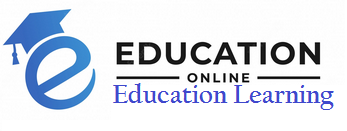The traditional methods of holistic education are being questioned and redefined in this day and age. Gone are the days when rote memorization and rigid classroom structures were the norm. The focus has now shifted to creating a more dynamic, engaging, and effective learning environment. Central to this shift is the concept of student centered education, an approach that has been proven to not only enhance academic performance but also instill a love for lifelong learning.
Understanding Student-Centered Teaching Methods
Student centered teaching methods place students at the heart of the educational process. Unlike traditional teacher centered approaches, where the teacher is the primary source of knowledge and authority, student centered methods involves students a lot more, encouraging them to take responsibility for their own learning, fostering critical thinking, creativity, and problem-solving skills.
A student-centered approach is characterized by several key elements:
Active Learning: Students engage in activities like discussions, projects, and group work, which help them apply what they’ve learned in real-world contexts.
Personalized Learning: Teaching is tailored to the individual needs, strengths, and interests of each student, ensuring that they remain motivated and engaged.
Collaborative Learning: Emphasizes teamwork and communication, allowing students to learn from each other and develop social skills.
Reflective Learning: Encourages students to reflect on their learning experiences, promoting self-awareness and continuous improvement.
The Impact of Student Centered Learning
The benefits of student centered learning are profound and far-reaching. Research has shown that students who are taught using student centered methods perform better academically and develop essential life skills that traditional methods often fail to nurture.
Improved Academic Performance
A study conducted by the National Education Association found that students in student centered classrooms scored higher on standardized tests compared to their peers in traditional classrooms. This improvement is attributed to the personalized attention and active engagement that student centered learning fosters.
Enhanced Critical Thinking and Problem-Solving Skills
Student centered learning environments encourage students to think critically and solve problems creatively. By engaging in hands-on activities and collaborative projects, students learn to analyze information, evaluate different perspectives, and develop innovative solutions. These skills are crucial for success in the 21st-century workforce, where adaptability and critical thinking are highly valued.
Increased Motivation and Engagement
When students are allowed to be involved directly in the learning process, they are being set up to be motivated and engaged. A student centered approach allows them to pursue their interests and learn at their own pace, making education a more enjoyable and meaningful experience. According to a report by the Bill & Melinda Gates Foundation, schools that implemented student centered learning saw a significant increase in student engagement and attendance rates.
Development of Lifelong Learning Habits
One of the most significant advantages of student centered education is its ability to cultivate lifelong learning habits. By encouraging students to take ownership of their learning, this approach instills a sense of curiosity and a desire for continuous improvement. Students learn how to learn, which is an invaluable skill in a world where knowledge and technology are constantly evolving.
Holistic Education: Beyond Academics
Student centered learning aligns perfectly with the principles of holistic education, which aims to develop the whole person – intellectually, emotionally, socially, and physically. Holistic education recognizes that academic success is just one aspect of a student’s development and that emotional and social growth are equally important.
Emotional and Social Development
Student centered methods provide a supportive and nurturing environment where students can develop their emotional intelligence and social skills. Activities such as group projects and peer-to-peer learning foster teamwork, communication, and empathy. These experiences help students build strong relationships and develop a sense of community and belonging.
Physical Development
Incorporating physical activities into the learning process is another aspect of holistic education. Movement and exercise have been shown to improve cognitive function and overall well-being. Student centered approaches often include outdoor learning, hands-on experiments, and kinesthetic activities, promoting physical health alongside academic achievement.
Implementing Student-Centered Approaches: Tips for Parents
As parents, you play a crucial role in supporting and advocating for student centered education. Here are some practical tips to help you foster a student centered learning environment at home:
Encourage Curiosity: Provide opportunities for your child to explore their interests and passions. Encourage them to ask questions and look for the answers independently.
Create a Supportive Learning Space: Designate a quiet, organized area for your child to study and engage in learning activities. Ensure that it is free from distractions and conducive to concentration.
Promote Collaborative Learning: Facilitate group activities and projects that allow your child to work with others. This can include family projects, community service, or study groups.
Be Involved: Stay informed about your child’s learning progress and communicate regularly with their teachers. Your involvement and support can significantly enhance their educational experience.
Model Lifelong Learning: Demonstrate the value of continuous learning by pursuing your own interests and sharing your experiences with your child. This sets a positive example and reinforces the importance of education.
Conclusion
The shift towards student centered teaching methods represents a transformative change in education. By placing students at the center of the learning process, these methods foster academic excellence, critical thinking, motivation, and lifelong learning habits. Moreover, student centered learning aligns with holistic education principles, supporting the development of well-rounded individuals.
As parents, embracing and advocating for a student centered approach can make a significant difference in your child’s educational journey. By encouraging curiosity, creating supportive learning environments, promoting collaboration, and modelling lifelong learning, you can help your child thrive academically, emotionally, socially, and physically.

